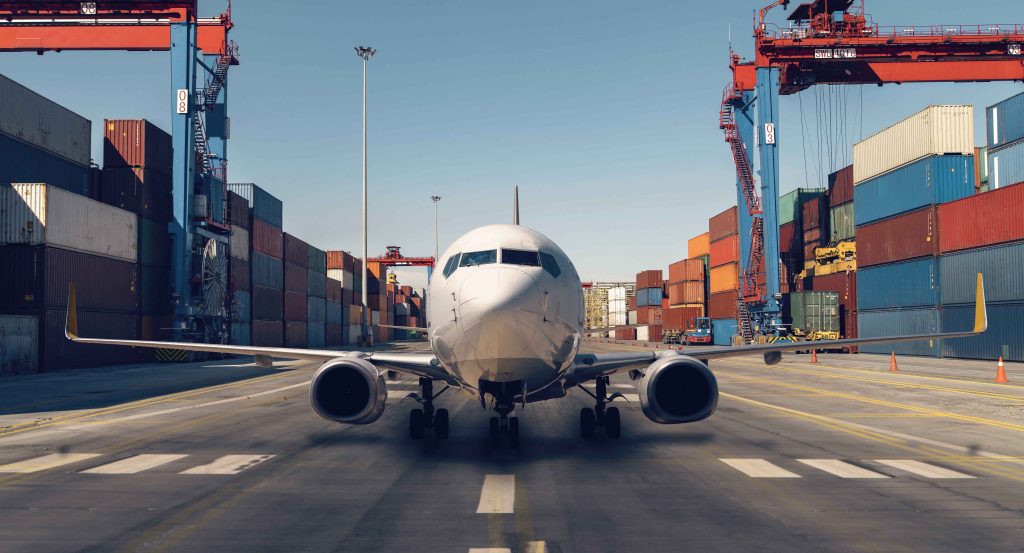Cargo traffic remains concentrated at the world’s main hub airports, with the top 20 airports handling around 42% of global volumes, despite a -3.2% decline year-over-year, according to ACI World. Global air cargo volumes fell by -1.8% in 2023 to 115 million tonnes, but top airport rankings remained steady. Hong Kong held first place, followed by Memphis, Shanghai Pudong, Anchorage, and Incheon, rounding out the top five spots. Senior director of data and analytics at ACI World, Diederik Meijerink, attributed the concentration of cargo traffic in the world’s main hub airport to the infrastructure, strategic trade locations, and large handling capacities at these hubs.
Chinese airports showed strong growth, driven by rising e-commerce and increased aircraft movements, boosting belly cargo capacity. Guangzhou and Shanghai recorded 71.1% and 112.3% increases in aircraft movement, respectively. Meijerink said more Chinese airports may enter the global top 20 air cargo rankings in the coming year.
Europe’s cargo hubs continued to slip, with only Paris and Frankfurt in the top 20. Middle Eastern airports like Doha returned to pre-pandemic positions, while U.S. airports showed mixed results. Cincinnati stood out and gained in ranks with robust e-commerce activity and by being strategically located where Amazon and DHL have hubs. Overall, Europe’s top gateways are slipping, with only two European airports – Paris and Frankfurt, in the top 20 list.
ACI World forecasted that global cargo volumes will reach 121 million tonnes by the end of 2024 and 126 million tonnes by 2025. Meijerink said that the air cargo sector has shown resilience and upward momentum despite trade policy uncertainties. IATA’s data from last year reflected a similar cautious optimism from the carriers’ perspective.
| Cargo (Metric Tonnes)* | ||||||
|---|---|---|---|---|---|---|
| 2023 | 2022 | 2019 | AIRPORT | 2023 | % CHANGE VS 2022 | % CHANGE VS 2019 |
| 1
|
1 | 1 | Hong Kong SAR, Hong Kong (HKG) | 4,329,934 | 3.1 | -10 |
| 2
|
2 | 2 | Memphis, USA (MEM) | 3,881,211 | -4 | -10.2 |
| 3
|
4 | 3 | Shanghai, China (PVG) | 3,440,084 | 10.4 | -5.3 |
| 4
|
3 | 6 | Anchorage, USA (ANC**) | 3,380, 374 | -2.4 | 23.1 |
| 5
|
6 | 5 | Incheon, Korea (ICN) | 2,744,136 | -6.9 | -0.7 |
| 6
|
5 | 4 | Louisville, USA (SDF) | 2,727,820 | -11.1 | -2.2 |
| 7
|
8 | 12 | Miami, USA (MIA) | 2,525,591 | 1 | 20.7 |
| 8
|
11 | 8 | Doha, Qatar (DOH) | 2,355,503 | 1.5 | 6.3 |
| 9
|
9 | 13 | Los Angles, USA (LAX) | 2,130,835 | -14.9 | 1.9 |
| 10
|
7 | 9 | Taipei, Taiwan (TPE) | 2,112,988 | -16.8 | -3.2 |
| 11
|
15 | 17 | Guangzhou, China (CAN) | 2,030,523 | 7.7 | 5.7 |
| 12
|
10 | 10 | Tokyo, Japan (NRT) | 1,906,623 | -20.5 | -9.4 |
| 13
|
12 | 18 | Chicago, USA (ORD) | 1,906,463 | -14.7 | 8.4 |
| 14
|
17 | 26 | Cincinnati, USA (CVG) | 1,900,270 | 5.9 | 67.8 |
| 15
|
14 | 11 | Paris, France (CDG) | 1,870,919 | -2.8 | -11 |
| 16
|
13 | 14 | Frankfurt, German (FRA) | 1,869,090 | -5 | -10.6 |
| 17
|
18 | 7 | Dubai, UAE (DXB) | 1,805,898 | 4.5 | -28.2 |
| 18
|
16 | 15 | Singapore, Singapore (SIN) | 1,759,800 | -5.9 | -14.4 |
| 19
|
23 | 47 | Istanbul, Turkey (IST) | 1,603,262 | 11.3 | 214.7 |
| 20
|
20 | 24 | Shenzhen, China (SZX) | 1,600,348 | 6.2 | 24.7 |
* Cargo: loaded and unloaded freight and mail in metric tonnes
** includes transit freight
Source: Air Cargo News , Airports Council International

